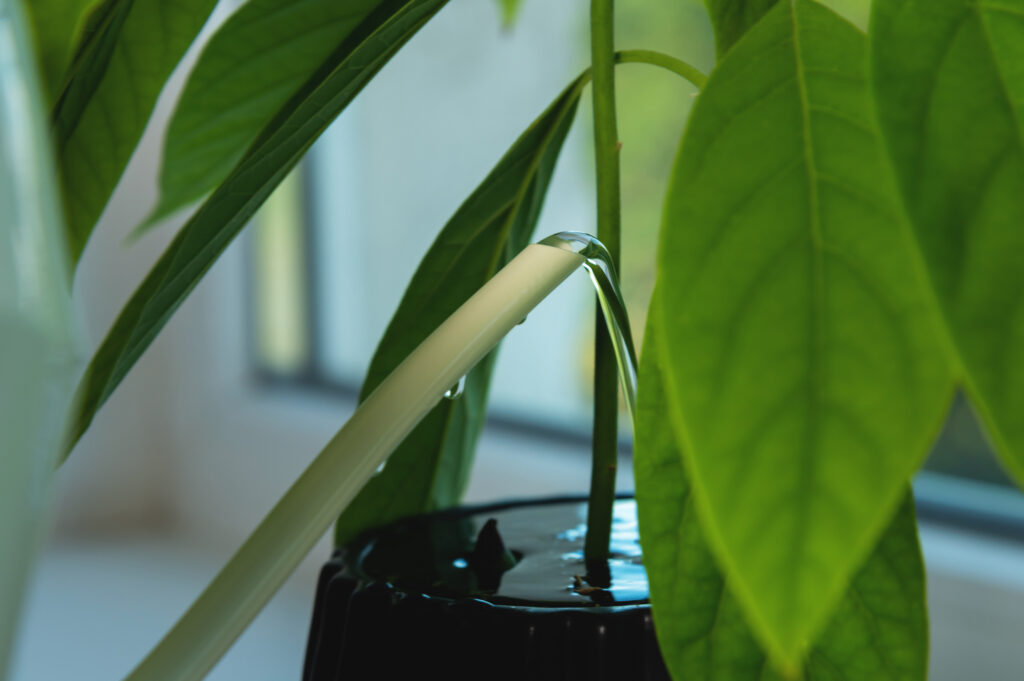Why a Self-Watering System Benefits Large Tropical Foliage
Big-leaf tropical plants, such as Elephant Ear or Bird of Paradise, can transform a room into a lush haven—but they also tend to be thirsty. A DIY self-watering system saves time and prevents over- or under-watering, keeping these sizable houseplants consistently hydrated. By understanding how a self-watering system works, you’ll create a more predictable environment where big leaves can flourish without constant intervention.
Wicking Method as a Simple Self-Watering System
One of the most straightforward designs relies on a wick that draws water from a reservoir into the plant’s pot. Thread a cotton or nylon wick through the drainage hole, then place the free end in a container of water below. The wick delivers moisture gradually, matching the plant’s uptake. This self-watering system is ideal for travelers or those who forget weekly watering schedules. Just top up the reservoir periodically to maintain steady hydration.
Using an Inverted Water Bottle for Steady Moisture
Another option employs a flipped water bottle poked into the soil. Fill the bottle, quickly invert it, and press the neck into the pot. As the soil dries, it pulls air into the bottle, releasing water at a controlled trickle. Adjust the insertion depth to tweak flow rate, ensuring the large-leaved tropical gets enough moisture without flooding. While not the most stylish self-watering system, it’s both easy and cheap, and can be hidden by the plant’s foliage.

Creating a Double-Pot Self-Watering System
Double-pot designs suit those wanting a neater look. The inner pot holds the plant, while the outer container serves as a reservoir. A channel or tube allows water to be poured into the space between pots. A wick or built-in platform ensures roots draw water as needed. Many commercial planters follow this principle, though you can adapt standard pots if they fit snugly. This self-watering system offers a more refined aesthetic for larger plants displayed prominently.
Balancing Moisture Retention and Drainage
A self-watering system works best with a potting mix that retains moisture yet doesn’t become mucky. Mix in peat moss or coco coir for water retention, then add perlite or coarse bark for air pockets. Even with a steady water supply, large tropical roots need oxygen to thrive. If the potting mix is overly dense, roots risk suffocation. Adjust the blend until it holds enough water for your system but drains sufficiently to avoid stagnation.
Monitoring Self-Watering Results
Observe the plant’s leaves for signs of too much or too little water. Browning leaf edges may indicate dryness, while yellowing or drooping can point to waterlogged roots. Each large-leaf variety has a slightly different tolerance. Some Elephant Ear species crave near-constant moisture, while others prefer moderate conditions. Tweak your self-watering system by altering the reservoir’s size or wicking material to achieve an ideal balance.
Maintaining Humidity and Air Circulation
While a self-watering system ensures consistent soil moisture, it may not raise ambient humidity, which big tropical leaves often crave. Group plants together, mist them, or use a humidifier to enhance the surrounding air. At the same time, maintain decent airflow to prevent fungal issues. If you suspect mildew or foul odors in the soil, let the top layer dry more before refilling the reservoir. A gentle fan can help disperse any trapped moisture around leaves.
Fertilizing Your Self-Watered Houseplants
Steady moisture lets roots absorb nutrients efficiently, but feeding must be handled carefully. Too much fertilizer can accumulate in a self-watering system, scorching roots. Consider applying a diluted, balanced fertilizer on a set schedule—often monthly—rather than adding it to the reservoir each time. Flushing the pot with plain water can help remove excess salts, ensuring vibrant growth without chemical buildup.
By installing a self-watering system, large tropical plants enjoy consistent moisture that promotes healthy leaf development and reduces the risk of wilting. Whether you choose the simple wick method, an inverted water bottle trick, or a polished double-pot setup, each approach frees you from daily watering chores and guesswork. With balanced soil, close observation, and occasional fertilizing, your indoor greenery will remain lush, giving your home a tropical aura with minimal fuss.




